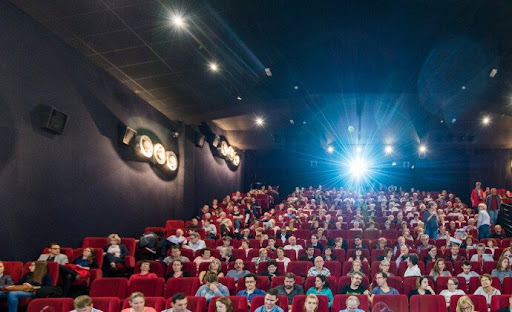The Age of the Cinema

Image via Europa Cinemas
The Art of Cinema is defined by a director’s vision of a world that they’ve made. These films had a huge influence on entertainment all around the world as we know it, initially starting from a silent era into a golden age.
It all began in 1891, the Edison company showcased a prototype of the Kinetoscope. The Kinetoscope was an early film projector that shocked the world at its time. The Lumière brothers improved on the invention of the Kinetoscope, instead creating their own called the Cinématographe. This new device allowed for recording motion pictures. It could be handheld and the brothers were the first to project a motion picture to an audience in December, 1895.
Throughout the following years, the cinema industry grew. Motion pictures started to have longer run times and bigger budgets. A Trip to the Moon was released in theaters on October 4th, 1902. The film was considered impressive due to it featuring innovative techniques such as superimposition, fading and double exposures. A Trip to the Moon created a starting point for many films to come.
The silent film era came to an end when sound films revolutionized the cinema industry. In the late 1920s, synchronized dialogues were available for short films initially in 1927, when The Jazz Singer was released. The Jazz Singer used a Vitaphone which was a sound-on-disk system making sound possible. The sound era evolved later and sound-on-films made its first introduction on April 15th, in New York City’s Rivoli Theatre. The first commercial screening of motion pictures with sound-on-films took place. The advantages that sound-on-films had compared to sound on disk was the easy production and better sound quality.
The Golden Age of Film emerged in the late 1920s and it progressed through the early 1960s. The cinema experience was improved with different screens ranging from size, curvatures, and color. With the growth of films, narratives became more complex with relatable diverse characters, and special effects included. The Golden Age made viewers witness the greatest motion pictures such as The Mark of Zorro, Scarface, and Robin Hood. The Golden Age of film helped establish the foundation of the world of cinema.
Then there was the Blockbuster Era, it was the peak of cinema with films like Star Wars, The Godfather, and Rocky. It lasted from the 1960s to 1970s, and this era of filmmaking laid the groundwork for the movies of today. During the late 1970s, the introduction of home media of VHS was introduced to television. Blu-Ray would be added onto home media much further and it is designed for higher quality viewing.
The Modern Age of Cinema is the one that we universally know today. 3D technology is at its peak with the rise of technology. Movies are now being streamed and there is a growth in documentary films. The theater experience has improved exponentially with higher quality displays and enhanced sound quality. Production and budget has increased, giving us films like Avatar and The Avengers.
Cinema has grown throughout the decades in order to reach what we know today. As the cinema industry grows, we can expect even greater films ahead.

Nau Hernandez is a junior at South Lakes and this is his first year of journalism. He is a staff writer and super excited to write for the South Lakes...













